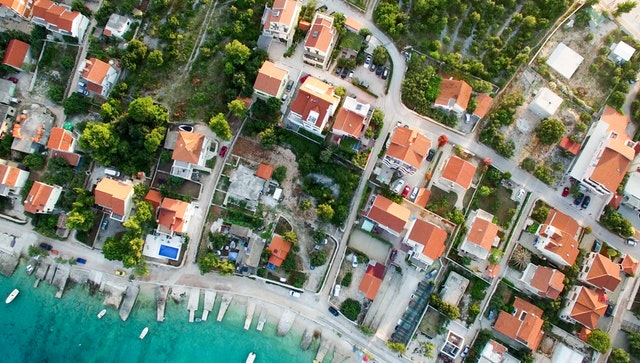With the popularity and falling price of consumer drones, shooting an aerial photograph no longer requires the cost of a helicopter or airplane flight. But with inexpensive consumer drones comes inexperienced photographers willing to learn. So what should new drone owners do to improve their aerial shots? Here are four drone photography tips for beginners.
RAW and bracketing are two little settings with a big difference.
If you plan to retouch a photo before sharing or printing, RAW is the way to go, and that applies whether you are shooting aerial images or standing with two feet on the ground. RAW files capture more data, which widens the possibilities in editing. For example, if you shot with the wrong white balance, correcting it in a RAW file will look exactly like you shot it that way in the first place, with no quality loss. RAW doesn’t correct all errors, but is generally more forgiving than a JPEG.
In drone photography, taking a photo isn’t a quick task — it involves all the prep and flight. To increase the odds of capturing an excellent shot, try turning on exposure bracketing. This mode takes several of the same photos at different exposure levels. Paired with RAW photography and you’ll significantly increase the odds of getting a great shot.
Look for patterns and unique compositions.
Things look different from the air — and the best drone photos often capitalize on this. As you fly (and especially when you are planning) look for shots with a pattern or unusual shape, both of which are emphasized by aerial images. Don’t just shoot straight down from high up exclusively, however, drones can also be useful for shooting tall objects straight on and achieving other unique views by experimenting with height and camera angle.
Watch the skies before you fly.
Before launching, look to the skies for two things — the light and the weather. Light can make or break a good photo, so plan accordingly. Mid-day creates harsh shadows while just before sunset or just after sunrise has long shadows and more of a golden color. Weather can also shape light — on a cloudy day, shadows will be minimal. Along with light, watch the weather to get the best results. Windy days will create blurry pictures, storms should be avoided. Fog can sometimes be used to add interest to a scene, but too much fog will obscure the subject.
Get to know your drone — and practice.
Like getting to know your camera helps get you better photos, getting to know your drone will help you take advantage of your UAVs strengths and minimize the weaknesses. For example, a drone with a great gimbal can take aerial long exposures, while drones without such a good stabilization system will need to use faster shutter speeds to avoid blur. Knowing your drone’s flight time, exploring all the different settings and practicing both flying and shooting will all help improve the quality of your shots.
Just because aerial photography is more accessible than ever before doesn’t mean that it’s easy. New pilots can apply drone photography tips like using RAW and flying during the best light to improve their aerial shots.
